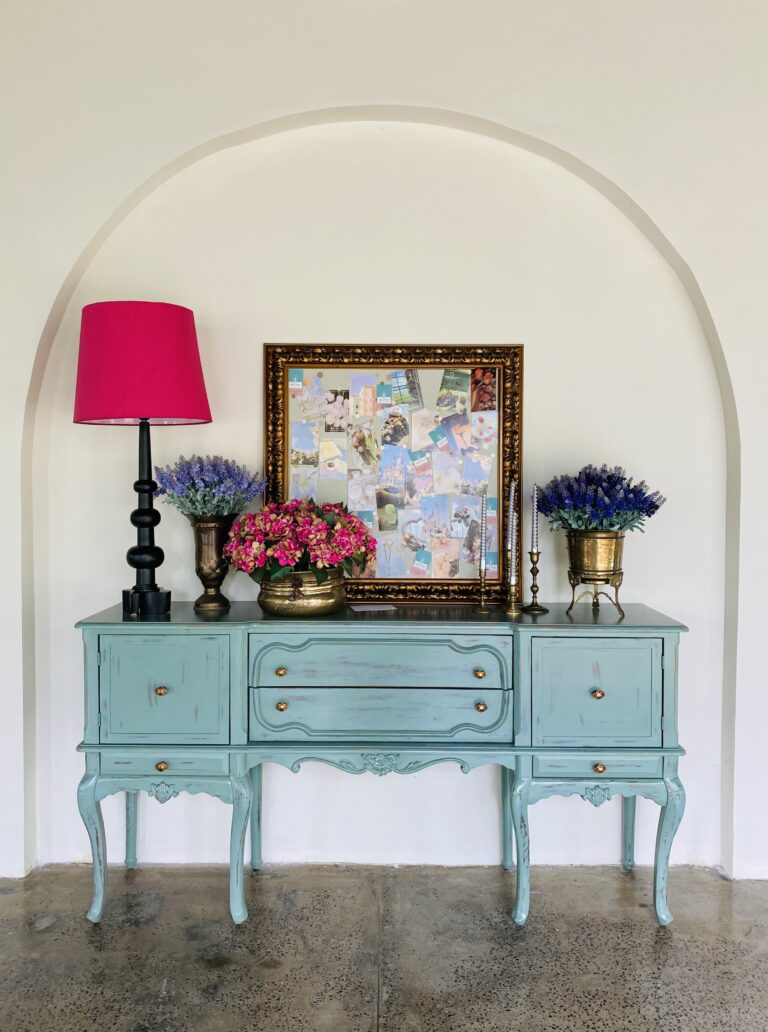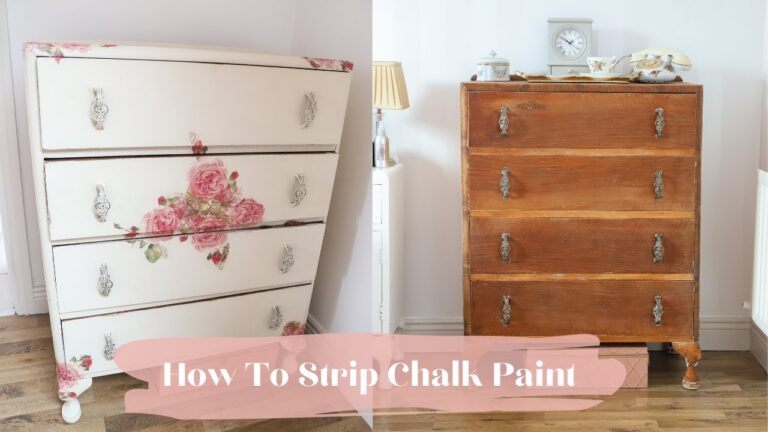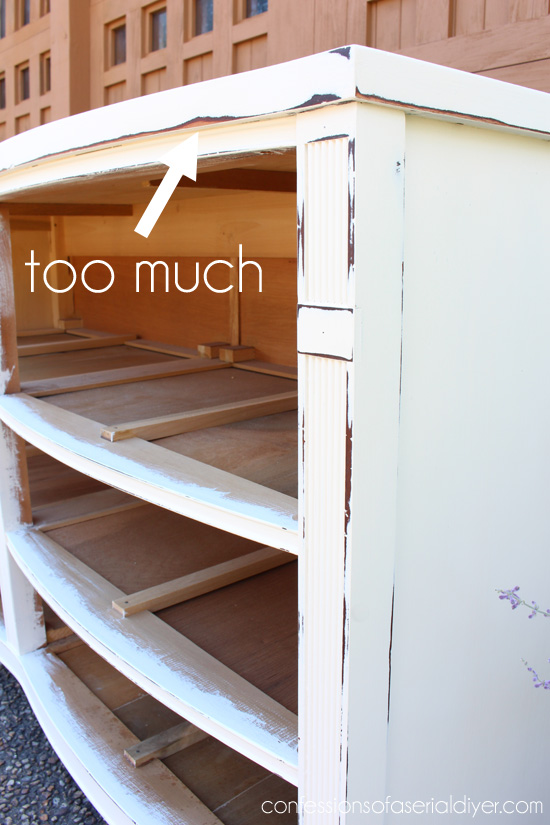Chalk paint is a popular choice for DIY projects due to its matte finish and ease of application. However, many people wonder if it is suitable for outdoor use and whether it can withstand exposure to water.
Chalk paint is not waterproof on its own but can be made waterproof by sealing it with a topcoat such as clear wax, polyacrylic, or polyurethane.
Let’s dive into learning more about how chalk paint is waterproof and how you can protect your painted surfaces from water damage.
What is Chalk Paint?
Chalk paint is a type of paint that creates a chalky, matte finish on surfaces. It’s known for its ability to adhere to almost any surface without the need for extensive prep work like sanding or priming. This makes it a favorite among DIY enthusiasts for furniture makeovers, home decor, and even walls.
Is Chalk Paint Waterproof?
The short answer is no, chalk paint is not waterproof. While it is water-resistant to some extent, it cannot withstand prolonged exposure to water without additional protection.
This means that if you use chalk paint on outdoor furniture or in high-moisture areas like bathrooms or kitchens, you will need to seal it to protect it from water damage.
Water-Resistant vs. Waterproof
It’s important to understand the difference between water-resistant and waterproof.
| Feature | Water-Resistant | Waterproof |
| Protection Level | Resists water penetration to some extent | Fully prevents water penetration |
| Suitable for | Light rain, splashes | Submersion in water, heavy rain |
| Duration of Exposure | Short-term exposure | Long-term or continuous exposure |
| Ideal for | Daily wear, exercise, light outdoor activities | Swimming, diving, extreme water conditions |
| Common Materials | Treated fabrics, coated surfaces | Sealed materials, rubber, specialized coatings |
| Typical Rating (IPX) | IPX1 to IPX4 | IPX7 or higher |
| Cost | Usually more affordable | Often more expensive |
| Maintenance | Requires more frequent checks for wear | Lower maintenance due to durable sealing |
| Examples | Watches, jackets | Diving gear, underwater cameras |
This simple comparison clarifies the main differences between water-resistant and waterproof products without unnecessary details.
Chalk Paint vs Regular Latex Paint- TEST What is the difference? Chalkpaint verses Regular Latex!
Making Chalk Paint Waterproof
To make chalk paint waterproof, you need to seal it with a protective topcoat. There are several options for sealing chalk paint, each with its advantages and disadvantages.
Clear Wax
Clear wax is a popular choice for sealing chalk paint because it maintains the matte finish and adds a subtle sheen. Here’s how you can apply it:
- Clean the surface: Ensure the painted surface is clean and dry.
- Apply wax: Use a wax brush or a lint-free cloth to apply a thin layer of wax. Work in small sections to ensure even coverage.
- Buff the wax: After drying (usually 24 hours), buff it with a clean cloth to achieve a smooth finish.
Pros:
- Maintains the matte look of chalk paint.
- Adds a soft sheen and smooth finish.
Cons:
- Requires regular reapplication in high-traffic or outdoor areas.
- Takes time to dry and cure properly.
Polycrylic
Polycrylic is a water-based sealer that provides a durable, protective finish. It’s available in matte, satin, and gloss finishes, allowing you to choose the level of shine you prefer.
- Apply with a brush or roller: Use a synthetic brush or foam roller to apply a thin, even coat of polyacrylic.
- Allow to dry: Let the first coat dry for about 2 hours before applying a second coat.
- Multiple coats: For the best protection, apply 2-3 coats, allowing each coat to dry thoroughly.
Pros:
- Durable and long-lasting.
- Available in various finishes.
Cons:
- Can be tricky to apply without visible brush strokes.
- Requires multiple coats for best results.
Polyurethane
Polyurethane is another option for sealing chalk paint, especially for outdoor use. It provides a tough, durable finish that can withstand the elements.
- Oil-based vs. Water-based: Choose between oil-based and water-based polyurethane. Oil-based polyurethane is more durable but can yellow over time, while water-based polyurethane is clear and won’t yellow.
- Apply with a brush or spray: Apply a thin coat with a brush or spray, ensuring even coverage.
- Multiple coats: Like polycrylic, apply 2-3 coats for optimal protection.
Pros:
- Extremely durable and weather-resistant.
- Suitable for outdoor use.
Cons:
- Oil-based polyurethane can yellow over time.
- Requires multiple coats and proper ventilation during application.
Lacquer
Lacquer provides a hard, protective finish that is ideal for outdoor furniture and other surfaces exposed to moisture.
- Apply with a brush or spray: Use a brush or spray to apply a thin coat of lacquer.
- Sand between coats: Lightly sand the surface between coats to ensure a smooth finish.
- Multiple coats: Apply 2-3 coats for the best protection.
Pros:
- Hard, durable finish.
- Excellent water resistance.
Cons:
- Requires careful application to avoid drips and runs.
- Strong fumes during application.
Considerations for Outdoor Use
When using chalk paint on outdoor furniture or surfaces, there are a few additional considerations to keep in mind:
- Choose Outdoor-Specific Products: If possible, select a topcoat specifically designed for outdoor use, such as marine varnish. These products are formulated to withstand harsh weather conditions and provide superior protection.
- Regular Maintenance: Outdoor surfaces require more frequent maintenance to keep them looking their best. Be prepared to reapply the protective topcoat periodically, especially if the furniture is exposed to direct sunlight, rain, or extreme temperatures.
- Proper Preparation: Ensure the surface is clean, dry, and free of dust and debris before applying chalk paint and the protective topcoat. This will help the paint and sealant adhere better and last longer.
- Test a Small Area: Before applying the protective topcoat to the entire surface, test it on a small, inconspicuous area to ensure you are satisfied with the finish and level of protection.
Conclusion
While chalk paint is not waterproof on its own, you can make it waterproof by sealing it with a protective topcoat such as clear wax, polyacrylic, polyurethane, or lacquer.
Each of these options has its advantages and disadvantages, so choose the one that best suits your project and environment.
By taking the necessary steps to seal and protect your chalk-painted surfaces, you can enjoy the beautiful, matte finish of chalk paint while ensuring it stands up to moisture and wear, whether indoors or outdoors.


